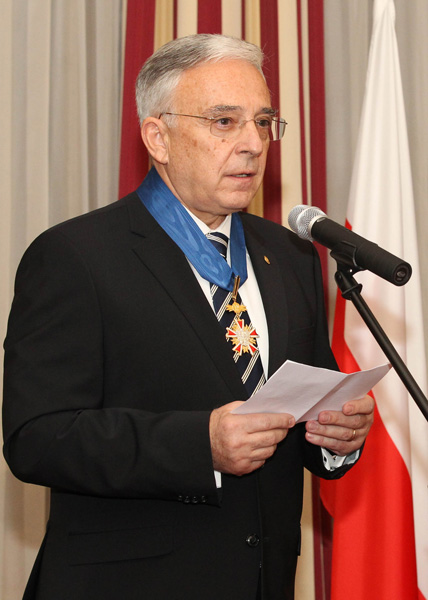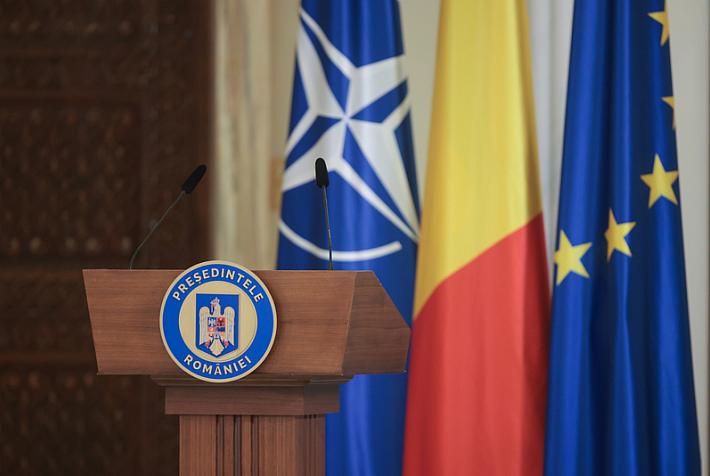Romanian Central Bank head re-sparks the missing treasure issue between Romania and Russia


The Romanian Central Bank Governor Mugur Isarescu (in picture) recently reminded of one of Romania's longest feuds with Russia - its long lost treasure. While receiving an award from the Polish Embassy to Bucharest, Isarescu reminded that Romania returned Poland's treasure by 1947, while the gold Romania sent to Moscow has not been returned after 100 years.
In September 1939, Bank Polsky, the Central Polish Bank, sent its treasure to the Romanian central Bank for safekeeping, and a small part of this treasure could not be returned from Romania until 1947, Isarescu reminded. Earlier in September this year, a conference dedicated to the evacuation through Romania of the gold reserves belonging to the Bank of Poland in 1939 took place in Bucharest.
"A small part of the Polish gold stayed in the vaults of the National Bank of Romania until 1947, when it was returned to the Polish people. Having in mind the end of the adventure of the Polish gold in 1939, namely its repatriation, one could not but make a connection with the history of the gold of the National Bank of Romania," said Isarescu.
He went on: "This is an association which may show how surprising history can be sometimes. In December 1916, during the First World War, Romania sent its gold to Moscow, to an allied country, far away from the frontline, passing through a territory that was much more friendly than the countries crossed by the Polish gold in 1939. And yet it was not returned, even after almost 100 years."
Mugur Isarescu's decoration ceremony at the Polish Embassy was attended by his two children, Lăcrămioara and Costin, who are members of the board with BNR, as well as his counselors Adrian Vasilescu and Lucian Croitoru.
Romania's treasure topic was recently raised by Romania's Foreign Affairs Minister Titus Corlatean, who said earlier in October that Romania's treasure is definitely in Moscow, and recovering it is a priority for the ministry he leads, but the chances of this happening rely on a functional political dialogue with the Russian Federation.
A commission of Romanian and Russian historians will meet in March 2013 to discuss Romania's national treasure, which, according to some Romanian officials, is in Moscow. The Russian Ambassador to Bucharest Oleg Malghinov however said there isn't anyone qualified to certify that the treasure still exists and is in Moscow. In a recent TV show in Romania, the Ambassador said the fact that the whole discussion had become political does not help, and that historians should be left to solve the problem.
In 2017, it will have been 100 years since Romania's treasure was sent to Moscow, the Romanian Minister said. “There were some small gestures from the Big Brother at the time, the Soviet Union, which sent some of the pieces of treasure back to Bucharest, which provided confirmation of its existence and presence in Russia, should we have needed another one,” said Corlatean.
Romania sent its treasure to Russia during the First World War, to protect it from the army of the Central Powers, which had occupied a large part of Romania. After the Russian revolution and the installation of communism, the treasure was never fully returned. Romania received three different lots, in 1935, 1956 and 2008, containing some of the objects in the treasure, but most of it remained outside Romania, turning it into a sensitive issue between Romania and Russia.
The treasure included 93 tonnes of gold, most of which was gold coins from individuals, companies and private banks in Romania, and 2.4 tonnes of gold bullion, belonging to the Romanian Central Bank (BNR). It also included documents, manuscripts, old coins, paintings, rare books, church objects and collections, as well as personal effects and various valuables. The Russian Empire at the time signed only with the Romanian Central Bank, and not with the owners of the goods, who had deposited them with BNR.
A first tranche of the treasure, including mostly the rare objects, documents, manuscripts, but none of the gold objects, was made in 1935. A second tranche, including the Pietroasele treasure, with 22 gold objects, as well as painting by Nicolae Grigorescu, jewelry, some gold coins and medals was sent back in 1956. In the early 90s, when Romania was no longer a communist country, Russia's response was that there was not a treasure problem anymore, as it had been solved in 1956. In 2008, in an attempt to recover the remainder, Romania received an extra 12 gold coins from Russia. Earlier in 2003, a commission of historians was set up to study the issue, after Russia refused to include the treasure in the friendship treaty signed the same year.
editor@romania-insider.com
(photo source: BNR)













